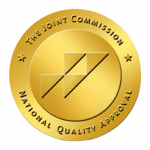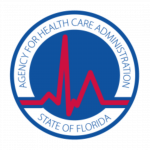Opioid addiction is one of the most common health problems in the United States. MAT, or Medication-Assisted Treatment, is one of the most effective treatment methods.
Medication-Assisted Treatment (MAT) combines FDA-approved medications and behavioral techniques or counseling to help a drug-abusive individual. Thus, the study says that this is one of the most successful strategies for opioid addiction treatment in comparison to conventional non-drug treatments.
The Start of Medication-Assisted Treatment (MAT)
In 2000, the Drug Addiction Treatment Act (DATA) allowed narcotic medications as a treatment for opioid dependency for outpatients. For this reason, In 2016 President Obama signed the Comprehensive Addiction and Recovery Act (CARA) into law. This allowed nurse practitioners and physicians assistants to prescribe medication. Not to mention, nearly 47,000 people died in the United States in 2017 from opioid overdose including heroin and other illegally manufactured medicines.
In light of this, the country saw an increase in demand for treatment and prevention. MAT has gained a greater level of acceptance and recognition as a response to the crisis. By the same token, in 2018 the Substance Use-Disorder Prevention that Promotes Opioid Recovery and Treatment for Patients and Communities Act (SUPPORT) Act expanded the ability for doctors and other medical professionals to treat patients with MAT. The American Medical Association recommends MAT as a revolutionary method of treatment.
Today, the Substance Abuse and Mental Health Services Administration (SAMHSA) said that almost every state offers MAT services.
What is It?
Combination of psychotherapy, counseling, and medication treatment for people who are dealing with substance use disorder (SUD).
MAT is a common treatment for heroin and opioid prescription drug abuse. It is a combination of psychotherapy, counseling, and medication. It blocks the effects of alcohol and narcotics and normalizes body functions while avoiding the negative effect of the substance.
These medications may aid in the management of withdrawal symptoms and physical cravings. It may also help with reducing the likelihood of relapse, as well as improving the overall health of those seeking recovery. Treatment may be extended indefinitely as long as a person is undergoing psychotherapy and is under the care of a physician (regardless of whether the treatment takes place in an inpatient or outpatient setting).
Additionally, MAT medication can help to reduce cravings and improve the chances of long-term recovery success. MAT strategies can help with a variety of things, including:
- Assisting in the long-term rehabilitation
- Reducing the chances of relapsing
- Blocking certain substances’ euphoric properties
- Assisting with depression, anxiety, and drug abuse
- Enhancing the quality of life
Medications Used in MAT
A variety of FDA-approved medications are used for MAT services. With this in mind, here are several drugs to treat alcohol and opioid use disorders that have been approved by the FDA:
Buprenorphine
Buprenorphine is an opioid addiction treatment, which causes minor opioid effects. Furthermore, reduces the likelihood of abuse due to its “ceiling effect”, meaning that after a certain amount of doses, no further side effects can occur. Your physician can prescribe Buprenorphine directly, or in an inpatient/outpatient setting.
Methadone
Methadone can treat withdrawal symptoms, opioid cravings, and extreme chronic pain. The occasional dosage of methadone is incapable of generating the blinding high that causes compulsive use. The MAT program carefully distributes and supervises the distribution of Methadone. Furthermore, Methadone is safe for use by pregnant and breastfeeding women.
Naltrexone
Naltrexone, unlike other drugs, can be injected or taken orally. The injectable or Vivitrol is a long-acting form that blocks opioid receptors one month at a time. Naltrexone can reduce an individual’s immunity to opioids. If a person relapses while on this drug, it can be very dangerous and life-threatening, and an overdose is possible.
Some of the MAT drugs used to treat alcoholism include:
- Disulfiram
- Naltrexone
- Acamprosate
Disulfiram
The first drug approved by the FDA to treat alcohol use disorder was disulfiram, more widely known by its brand name Antabuse. By upsetting the body’s natural alcohol metabolic pathway, it created an uncomfortable physiologic reaction. Although, if taken regularly, any amount of drinking will trigger a build-up of this chemical. An uncomfortable effect will take over the body, such as vomiting or headaches.
Acamprosate
Lastly, Acamprosate is commonly administered in tablet form and taken two to three times a day. This drug aids in the prevention of relapse in people who have already stopped drinking. It will not protect people who have recently stopped drinking from experiencing withdrawal symptoms. When used in conjunction with psychotherapy and recovery, the drug blocks neurotransmitters in the brain, which prevents people from experiencing the euphoric effects of alcohol.
Is Medication-Assisted Treatment a Good Option For You?
It’s important to remember that Medication-Assisted Treatment isn’t a remedy for drug abuse, it’s a way to recover from its effects. Although to receive an accurate diagnosis and receive proper treatment, it is important to know the nature of your substance abuse. See a qualified doctor, an addiction medicine counselor, or a combination of the two. When determining whether or not to pursue MAT, a medical professional’s judgment can also play a significant role.














